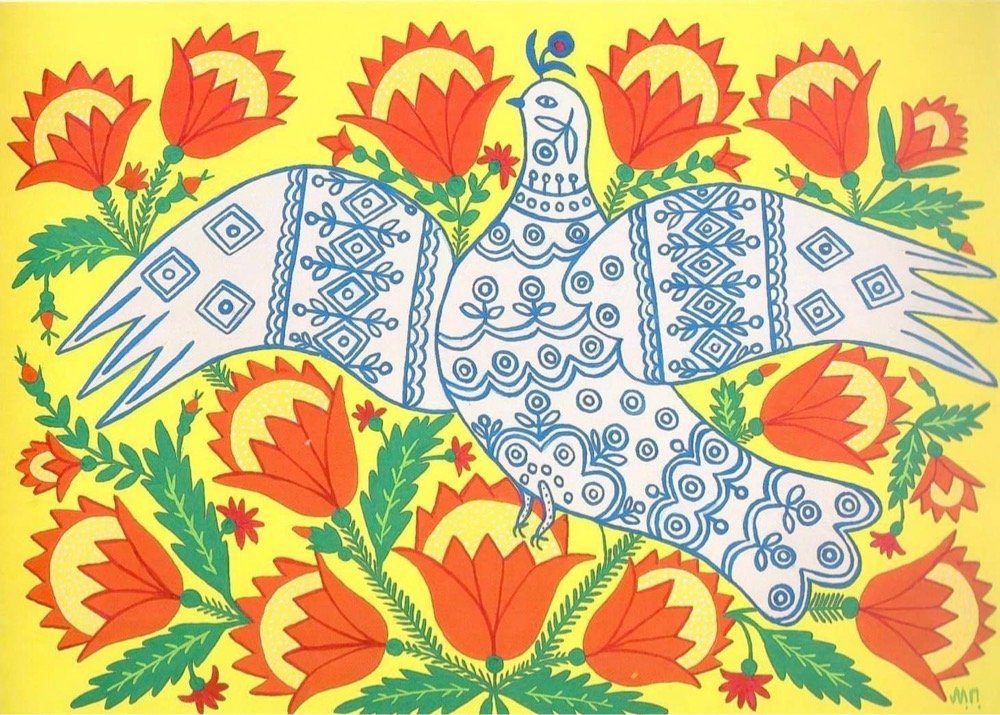Ukraine’s Most Famous Artist
Last week I just couldn’t bring myself to write. The invasion of Ukraine just toppled my emotions. The world feels like one crisis piled upon another. It’s really tough to wrap my head around.
But a wise friend told me that when we are silent, our absence is felt.
And I realize now that she is right. We all have our own gifts, power, magic, whatever you choose to call it. The thing we bring that is unique to us. And when we don’t bring that thing, the world suffers just a little bit more.
Even as it’s uncomfortable for me to be going on about creativity and art amongst the many kinds of wars taking place, I will put this out there, and then put more out there. Because it’s worth doing.
Today, in honor of the creativity and resilience of Ukrainian people, I want to share the art of Maria Prymachenko, one of Ukraine’s best known artists.
A self-taught artist, Maria Prymachenko (1909-1997) spent almost her entire life in her small village of Bolotnya, Ukraine, 19 miles from Chernobyl. She had to withdraw from school because of her polio, so she spent her time learning embroidery and Ukrainian traditions from her mother.
As her art practice grew, Prymachenko gained notoriety, winning The 1936 First Republican Exhibition of Folk Art. Her work was exhibited throughout Ukraine, Russia, Poland, and France.
Pablo Picasso said after visiting a Prymachenko exhibition in Paris, "I bow down before the artistic miracle of this brilliant Ukrainian."
In 1939 Maria had 2 operations in Kyiv to help her stand up. There she met Vasyl Marynchuk and they fell in love. In 1941 their son Fedir was born. Soon after, Maria’s brother Ivan was shot by the Nazis, and Vasyl was killed fighting in the Ukrainian army. She went back to home with her young son, but was not defeated.
Prymachenko’s style continued to develop, combining Ukrainian folk and nature motifs with a joyful, vibrant color palette and expressive, bold lines. Her work won the National Prize of the Ukraine, and was exhibited and collected worldwide. The Ivankiv Historical and Local History Museum, near her hometown, housed 25 of Prymachenko’s prized works.
Last Sunday, February 27, the Russian Forces burned it down.
It was reported on social media that local residents ran into the fire and were able to save some of her works. How many works, or their condition, is not yet known.



